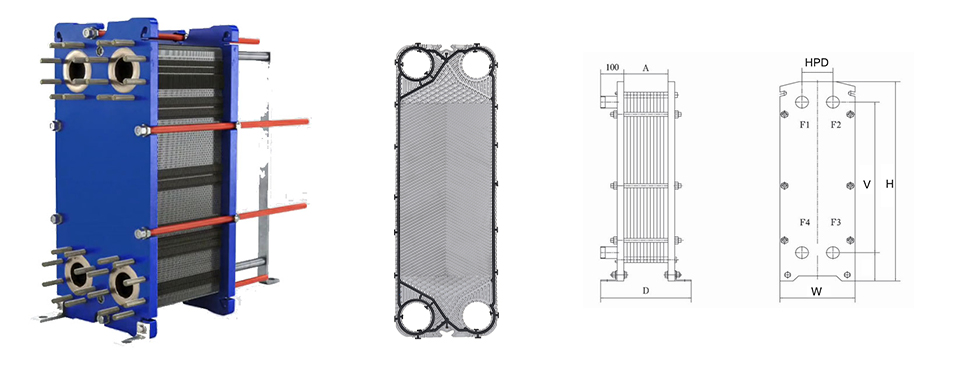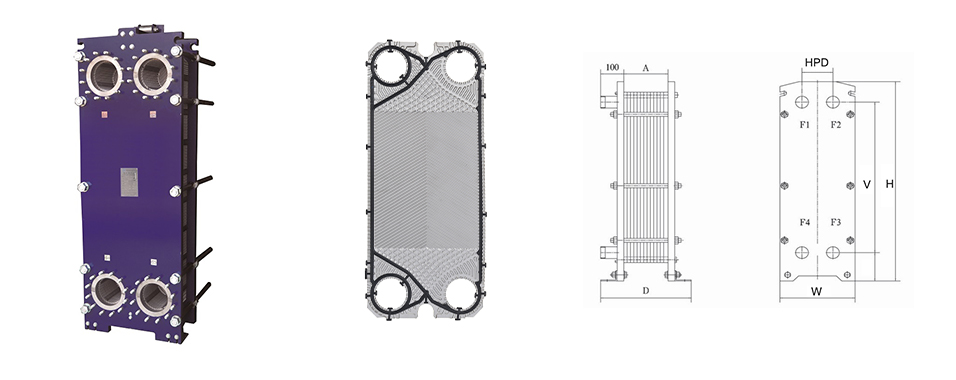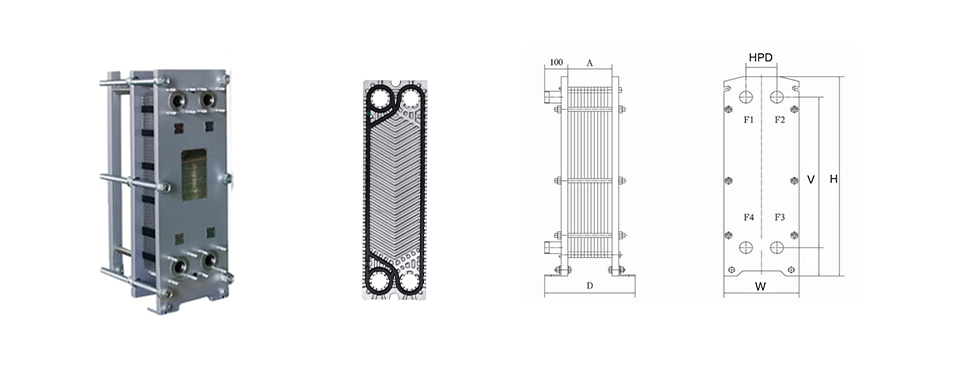Common faults and treatment methods of Sondex heat exchanger plate
One, string liquid
1 Cause
① Due to improper selection of plates, cracks or perforations are caused by corrosion of plates.
②The operating conditions do not meet the design requirements.
③The residual stress after cold stamping of the plate and the clamping size during assembly are too small to cause stress corrosion.
④ There is a slight leakage in the plate leakage groove, which causes the harmful substances in the medium to concentrate and corrode the plates, forming a string of liquid.
2 Processing method
①Replace the cracked or perforated plate, and use the light transmission method to find the crack of the plate on the spot.
②Adjust the operating parameters to reach the design conditions.
③The clamping size should meet the requirements during the repair and assembly of the heat exchanger, not as small as possible.
④ Reasonable matching of plate materials.
Two, leakage
1 Cause
①The clamping size is not in place, the size is uneven everywhere (the size deviation should not be greater than 3 mm) or the clamping bolt is loose.
② Part of the gasket is out of the sealing groove, there is dirt on the main sealing surface of the gasket, the gasket is damaged or the gasket is aging.
③ The plate is deformed, and the assembly misalignment causes the running mat.
④ There are cracks in the sealing groove of the plate or the second sealing area.
2 Processing method
① In the no-pressure state, re-clamp the equipment according to the clamping size provided by the manufacturer. The size should be uniform and the deviation of the compacted size should not exceed ±0.2N (mm) (N is the total number of plates). The parallelism between the plates should be kept within 2 mm.
② Make a mark on the leakage part, then disassemble the heat exchanger and investigate and solve it one by one, and reassemble or replace the gasket and plate.
③ Disassemble the open heat exchanger, repair the deformed parts of the plate or replace the plate. When there is no spare part for the plate, the plate at the deformed part can be temporarily removed and then reassembled for use.
④ When reassembling the disassembled plates, clean the plate surface to prevent dirt from adhering to the gasket sealing surface.
sondex heat exchanger plate
1 Cause
① Due to improper selection of plates, cracks or perforations are caused by corrosion of plates.
②The operating conditions do not meet the design requirements.
③The residual stress after cold stamping of the plate and the clamping size during assembly are too small to cause stress corrosion.
④ There is a slight leakage in the plate leakage groove, which causes the harmful substances in the medium to concentrate and corrode the plates, forming a string of liquid.
2 Processing method
①Replace the cracked or perforated plate, and use the light transmission method to find the crack of the plate on the spot.
②Adjust the operating parameters to reach the design conditions.
③The clamping size should meet the requirements during the repair and assembly of the heat exchanger, not as small as possible.
④ Reasonable matching of plate materials.
Two, leakage
1 Cause
①The clamping size is not in place, the size is uneven everywhere (the size deviation should not be greater than 3 mm) or the clamping bolt is loose.
② Part of the gasket is out of the sealing groove, there is dirt on the main sealing surface of the gasket, the gasket is damaged or the gasket is aging.
③ The plate is deformed, and the assembly misalignment causes the running mat.
④ There are cracks in the sealing groove of the plate or the second sealing area.
2 Processing method
① In the no-pressure state, re-clamp the equipment according to the clamping size provided by the manufacturer. The size should be uniform and the deviation of the compacted size should not exceed ±0.2N (mm) (N is the total number of plates). The parallelism between the plates should be kept within 2 mm.
② Make a mark on the leakage part, then disassemble the heat exchanger and investigate and solve it one by one, and reassemble or replace the gasket and plate.
③ Disassemble the open heat exchanger, repair the deformed parts of the plate or replace the plate. When there is no spare part for the plate, the plate at the deformed part can be temporarily removed and then reassembled for use.
④ When reassembling the disassembled plates, clean the plate surface to prevent dirt from adhering to the gasket sealing surface.
sondex heat exchanger plate








